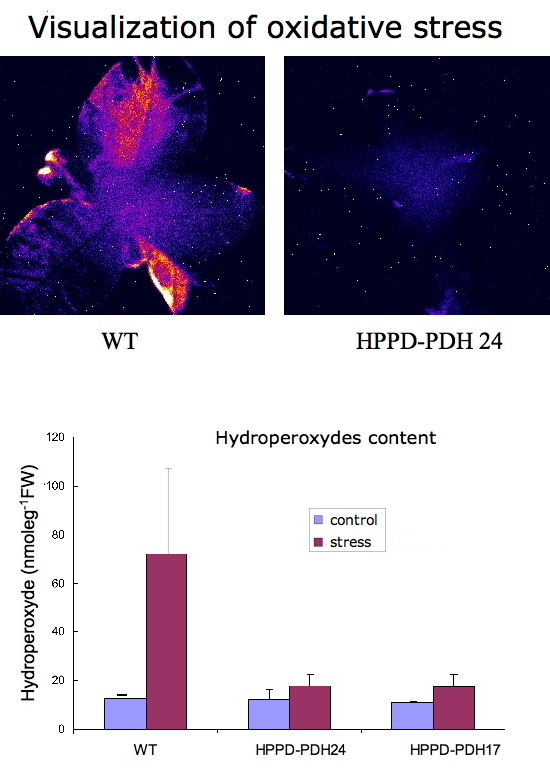By metabolic engineering approach of the shikimate pathway, which provide tyrosine a precursor of vitamin E, we obtained transgenic tobacco accumulating in their leaves large amounts of tocotrienols. In collaboration with researchers from the laboratoire d'écophysiologie moléculaire des plantes (CEA-Cadarache), they have shown that tocotrienols, which accumulate exclusively in the thylakoids of transgenic plants significantly increase resistance to stress photooxidizing caused by the exposure to strong light and low temperatures. Under these conditions, the photoinhibition of photosystem II and lipid peroxidation are indeed significantly less than in wild tobacco.

Resistance to oxidative stress in transgenic tobacco.
Wild type and transgenic Tobacco plants are exposed to light stress conditions (700 micromol m2s-1) at low temperature (10° C).
A: autoluminescence hydroperoxides recorded using a camera LCD cooled with liquid nitrogen. Transgenic plants emit much less luminescence than the wild-type plants.
B: Determination of hydroperoxides by HPLC. This analysis confirms that hydroperoxides are more abundant in the wild-type than in transgenic tobacco.